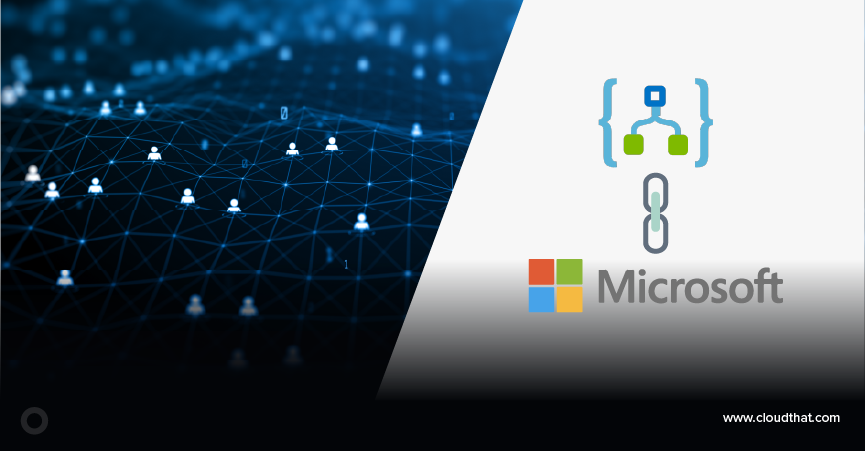|
Voiced by Amazon Polly |
Overview
As the volume of data continues to explode, organizations face the challenge of efficiently processing and analyzing massive datasets. Traditional on-premises infrastructure may struggle to handle such enormous workloads, leading to slow processing times and high costs. To tackle this, cloud service providers offer managed big data processing solutions that enable businesses to harness the power of distributed computing. This blog will explore two popular cloud services for big data processing: Amazon Elastic MapReduce (EMR) and Azure HDInsight. We will compare their features, capabilities, and use cases to help you decide on your big data projects.
Pioneers in Cloud Consulting & Migration Services
- Reduced infrastructural costs
- Accelerated application deployment
Amazon Elastic MapReduce (EMR)
Amazon Elastic MapReduce (EMR) is a cloud-based big data processing service that allows you to process vast amounts of data using popular big data frameworks such as Apache Hadoop, Apache Spark, and Apache Hive. Amazon EMR is designed to simplify the process of provisioning and managing clusters, making it easier to scale resources up or down based on demand.
Key Features of Amazon EMR:
- Flexibility: Amazon EMR provides a wide range of applications and frameworks, allowing users to choose the right tool for their needs. Whether it’s batch processing with Hadoop or real-time analytics with Spark, Amazon EMR has you covered.
- Easy Cluster Management: Amazon EMR automates the setup, tuning, and monitoring of clusters. You can easily add or remove nodes, resize clusters, and define auto-scaling rules to optimize performance and cost efficiency.
- Integration with AWS Services: Amazon EMR seamlessly integrates with other AWS services, such as Amazon S3 for data storage, Amazon DynamoDB for NoSQL databases, and Amazon Redshift for data warehousing.
- Cost Management: Amazon EMR offers cost-effective pricing options, including spot instances that allow you to bid on unused Amazon EC2 instances, reducing costs significantly.
Azure HDInsight
Azure HDInsight is Microsoft’s cloud-based big data processing service that enables the processing of large datasets using popular open-source big data frameworks like Apache Hadoop, Apache Spark, Apache Hive, and more. Azure HDInsight simplifies big data processing with fully managed clusters, making deploying and scaling resources on-demand easy.
Key Features of Azure HDInsight:
- Deep Integration with Azure Services: Azure HDInsight seamlessly integrates with other Azure services, such as Azure Data Lake Storage for data storage, Azure Data Factory for data integration, and Azure Active Directory for security and access control.
- Extensive Framework Support: Azure HDInsight supports various big data frameworks, including Hadoop, Spark, Hive, HBase, Kafka, and more, providing users with various options for data processing and analysis.
- Security and Compliance: Azure HDInsight ensures data security and compliance with features like Azure Virtual Network for private cluster connectivity, Azure Managed Service Identity for secure authentication, and integration with Azure Security Center.
- Enterprise-Grade SLAs: Azure HDInsight offers strong service level agreements (SLAs) for uptime and availability, making it suitable for mission-critical applications.
Amazon EMR vs. Azure HDInsight
- Ecosystem and Frameworks: Amazon EMR and Azure HDInsight support popular big data frameworks, ensuring that users can choose the tools that best fit their requirements. Amazon EMR supports Hadoop, Spark, Hive, HBase, Flink, and more. Azure HDInsight supports similar frameworks and adds Storm, Kafka, and Hadoop Interactive Query (LLAP) to its ecosystem.
- Integration with Cloud Services: Both services deeply integrate with their respective cloud platforms. Amazon EMR works seamlessly with AWS services like Amazon S3, Amazon DynamoDB, and Amazon Redshift. At the same time, Azure HDInsight integrates smoothly with Azure Data Lake Storage, Azure Data Factory, and Azure Active Directory.
- Ease of Use: In terms of ease of use, Azure HDInsight stands out with its intuitive user interface and simplified cluster management. Amazon EMR, although powerful, may require more configuration and tuning for optimal performance.
- Cost Considerations: Both services offer flexible pricing options, allowing users to optimize costs based on their usage patterns. Amazon EMR provides spot instances, which can significantly reduce costs, while Azure HDInsight offers various pricing tiers based on the type and size of the cluster.
Use Cases
- Amazon EMR:
- Large-scale batch processing of data using Hadoop or Spark.
- Real-time stream processing and analytics with Apache Flink.
- Interactive data analysis using Apache Zeppelin or Jupyter notebooks.
- ETL (Extract, Transform, Load) workflows with Hive and Pig.
- Azure HDInsight:
- Big data processing and analysis for IoT data using Hadoop or Spark.
- Real-time event processing with Apache Kafka and Storm.
- Advanced analytics and machine learning with Spark and MLlib.
- Integrating with Azure Data Lake Storage for big data analytics.
Conclusion
Carefully assess your requirements, compare the features, and consider the integration with other cloud services before deciding. Whichever platform you choose, Amazon EMR and Azure HDInsight can help you unlock the full potential of your big data and enable data-driven decision-making for your organization.
Drop a query if you have any questions regarding Amazon EMR and Azure HDInsight and we will get back to you quickly.
Empowering organizations to become ‘data driven’ enterprises with our Cloud experts.
- Reduced infrastructure costs
- Timely data-driven decisions
About CloudThat
CloudThat is an award-winning company and the first in India to offer cloud training and consulting services worldwide. As a Microsoft Solutions Partner, AWS Advanced Tier Training Partner, and Google Cloud Platform Partner, CloudThat has empowered over 850,000 professionals through 600+ cloud certifications winning global recognition for its training excellence including 20 MCT Trainers in Microsoft’s Global Top 100 and an impressive 12 awards in the last 8 years. CloudThat specializes in Cloud Migration, Data Platforms, DevOps, IoT, and cutting-edge technologies like Gen AI & AI/ML. It has delivered over 500 consulting projects for 250+ organizations in 30+ countries as it continues to empower professionals and enterprises to thrive in the digital-first world.
FAQs
1. How do Amazon EMR and Azure HDInsight differ in terms of supported frameworks?
ANS: – Both services support a wide range of big data frameworks. Amazon EMR supports Hadoop, Spark, Hive, HBase, Flink, and more. Azure HDInsight supports similar frameworks and adds Storm, Kafka, and Hadoop Interactive Query (LLAP) to its ecosystem.
2. How do Amazon EMR and Azure HDInsight integrate with other cloud services?
ANS: – Amazon EMR integrates with other AWS services like Amazon S3 for data storage, Amazon DynamoDB for NoSQL databases, and Amazon Redshift for data warehousing. Azure HDInsight integrates with Azure Data Lake Storage, Azure Data Factory, and Azure Active Directory for security and access control.
3. Which service offers better ease of use?
ANS: – Azure HDInsight stands out in ease of use with its intuitive user interface and simplified cluster management. Amazon EMR, while powerful, may require more configuration and tuning for optimal performance.

WRITTEN BY Daneshwari Mathapati
Daneshwari works as a Data Engineer at CloudThat. She specializes in building scalable data pipelines and architectures using tools like Python, SQL, Apache Spark, and AWS. She is proficient in working with tools and technologies such as Python, SQL, and cloud platforms like AWS. She has a strong understanding of data warehousing, ETL processes, and big data technologies. Her focus lies in ensuring efficient data processing, transformation, and storage to enable insightful analytics.


 Login
Login


 September 5, 2023
September 5, 2023 PREV
PREV










Comments